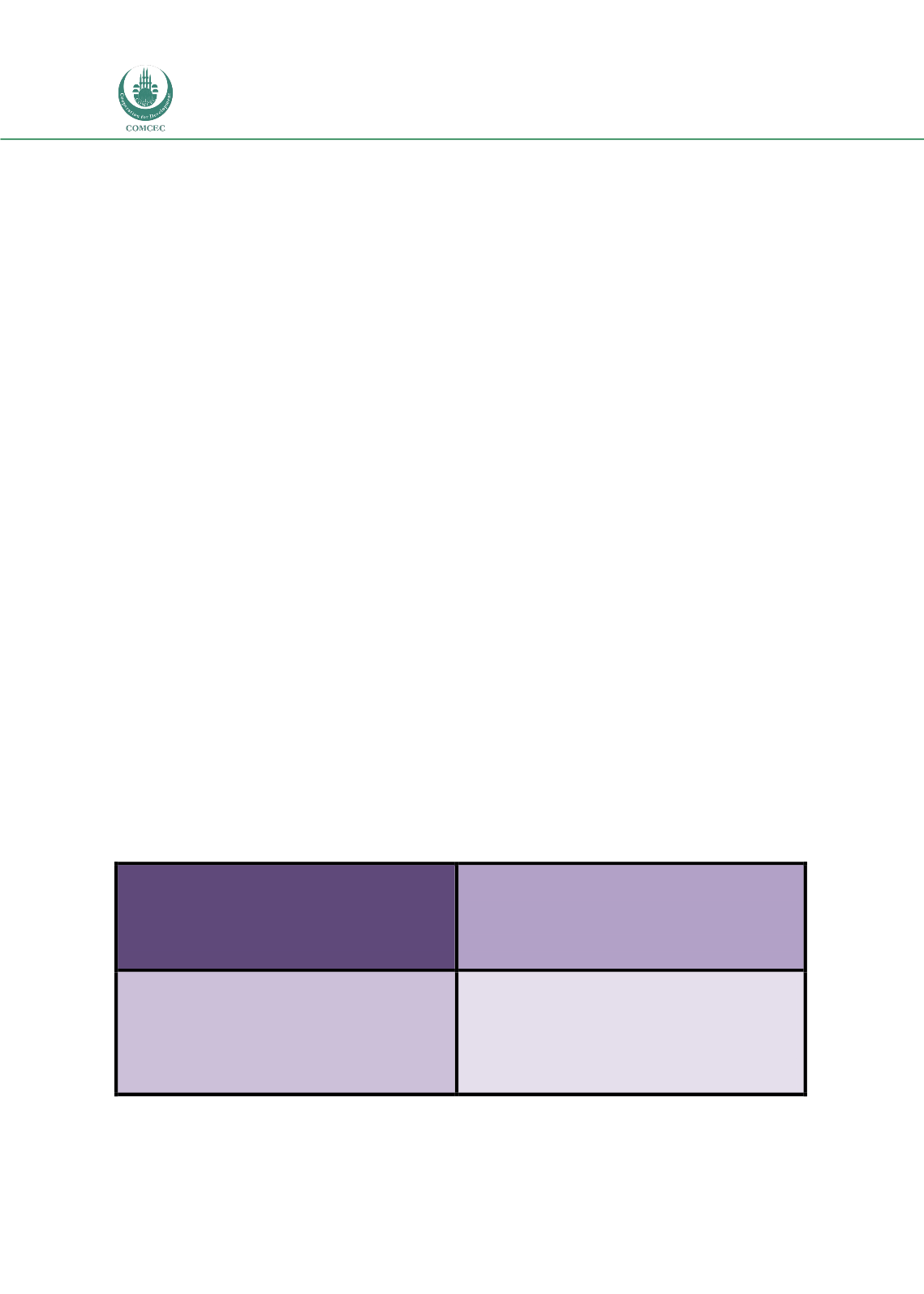

Improving Agricultural Statistics in the COMCEC Region
56
For the two remaining countries, Bahrain and Brunei, three different types of information
produced in this study were used. Firstly the responses to FAO questionnaires were used, for
which Brunei and Bahrain registered zero percent response rates. Secondly, the census survey
UDA conducted was used. Here Brunei scored zero as well, but Bahrain showed a reasonable
positive performance. Thirdly, the UDA website survey was used: Brunei showed a very poor
performance, while Bahrain presented relatively well. Hence, the category C was assigned to
Bahrain, and Brunei received category D.
It should be noted that the IASD scores and the categories assigned carry some degree of
arbitrariness, approximation and error in this study, as they often do in any other assessment
study. The arbitrariness mainly comes from the specifications of the category limits. This
significantly affects the countries within the margins of the category limits. The placements of
Qatar, Lebanon and Malaysia within the margins of categories C and D; Benin, Uganda and
Tajikistan within those of categories B and C; Albania, Niger and Bangladesh within categories
A and B, are very sensitive to what the category cut-off points are. The matchings for countries
with no SSAQ scores from other studies are inevitably rough estimates since the
methodologies, coverages and assessment scores differ across studies. Lastly it should also be
noted that the SSAQ scores depend not only on the quality of the agricultural statistics, which
is targeted for assessment, but also the quality and completeness of the responses provided to
the SSAQ. There are more than a few cases where IASD scores could have been improved, if
more thorough responses would have been provided in the questionnaires.
Next, the IASD for all COMCEC Member Countries are presented in Table 38 and Figure 9. Of
the total COMCEC Member Countries, Category A contains 9 countries representing 16 percent,
Category B contains 11 countries representing 19 percent, Category C contains 17 countries
representing 30 percent, and finally Category D which contains 20 countries representing
35 percent. An interesting observation is the proportion of members responding to SSAQ,
which increases gradually from Category D to A. In fact, all countries in Category A and
81 percent in Category B responded to SSAQ. Only 52 percent of members in Category C and
45 percent in Category D responded to SSAQ.
Of the 8 case study countries, 4 are in Category A, 2 are in Category C and 2 are in Category D.
Table 38: IASD Country Groupings for COMCEC Member Countries
CATEGORY A (9)
Burkina Faso, Cameroon, Mozambique, Togo,
Egypt, Morocco, Bangladesh, Iran, Turkey
CATEGORY B (11)
Mali, Niger, Nigeria, Iraq, Jordan, Saudi Arabia,
Tunisia, Albania, Azerbaijan, Maldives,
Tajikistan
CATEGORY C (17)
Benin, Chad, Guinea, Guinea-Bissau, Uganda,
Sierra Leone, Bahrain, Lebanon, Mauritania,
Palestine, Syria, Indonesia, Kazakhstan,
Malaysia, Pakistan, Uzbekistan, Suriname
CATEGORY D (20)
Côte d'Ivoire, Gabon, Gambia, Senegal, Algeria,
Comoros, Djibouti, Kuwait, Libya, Oman, Qatar,
Somalia, Sudan, Yemen, United Arab Emirates,
Afghanistan, Brunei, Kyrgyzstan, Turkmenistan,
Guyana
Source: Table 37.

















